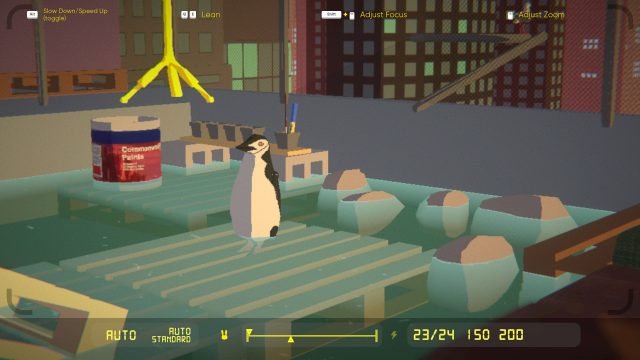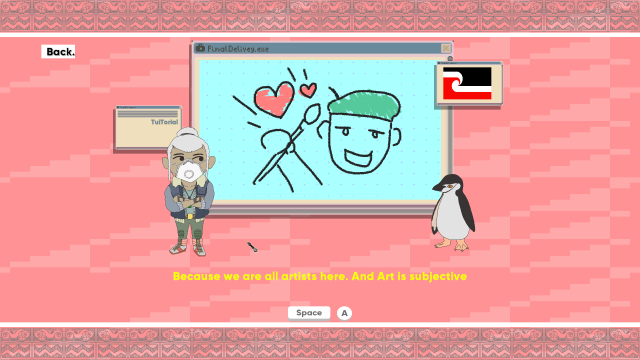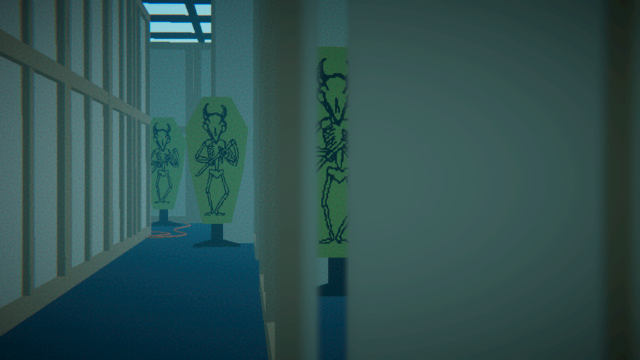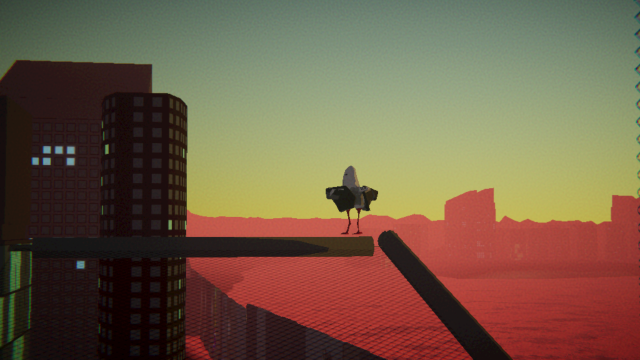Plenty of games by now have implemented some sort of photography mechanic where the player can further immerse themselves in the world by having their character take images of their view of their world. But photography in these games are often hardly the most important feature of the game. At least until Umurangi Generation, a first person photography simulator first released in May 2020. Well received by indie players and critics, the IGF award-winning game is most notable for its ability to make a subjective art form, like photography, an actually rewarding core mechanic in a virtual world.
Set in the “shitty future” [sic], the player is a Māori courier amidst impending civil turmoil and resistance against a United Nations occupation. Armed only with a film camera (and great parkour skills), the player traverses the cityscape and takes pictures for cash. I played the first level of the game, taking place at the roof of Mauao View, with graffiti splattered walls, scratchy chill hop blasting from boomboxes, and a pool with a penguin?

Lens #17: The Toy
Here the toy clearly is the camera. Is the camera fun to play with even though there are no goals? That would depend on how well the virtual camera is adapted from a real life one.
To many photography enthusiasts, it is essential that the camera has enough settings to give them control and autonomy over the outcome of their shots. But to photography beginners, the technical details may be overwhelming. Being neither a replacement of photography, nor a photography tutorial, but a photography game, it is essential that the camera is accessible enough, but also providing the options that real photography provides in terms of color, focus, exposure, etc. The game abstracts away or omits many of the technical details (film types, f-stop, developing), and together with the “photo editing app”-style sliders and limited mechanics (mainly zoom, focus, lens switching), Umurangi Generation really succeeds in maintaining this balance.
Lens #79: Freedom
Having a good camera doesn’t necessarily make the game fun. A game about art would not make sense if the player doesn’t have artistic freedom. The game makes it clear from the get go that scoring photos by some sort of metric isn’t right; after all…

This translates directly into the game as: you will not be graded/judged/penalised for the aesthetic of your shots. In fact you can either
- take low effort shots and rush through the game
- carefully framing and color grading each shot
- parkouring into the weirdest places and just taking the most extreme angles
and you can complete the game just the same. In fact, the less you feel bounded by the need to play the game properly, the more you go out of the way to explore the world beyond what the rules tell you to, the more you are likely to get out of the game.

Lens #38: Challenge
All that said, this game is not a sandbox game, it doesn’t have enough building/interactive elements to be one. So how can the players feel challenged, and feel progression in a game that doesn’t emphasize extrinsic objectives?
- Photo bounties: Take pictures of the items required
- Constraints: Time limit, Film limit.
- Unlocking equipment: By fulfilling bonus objectives
Photo bounties give the player some direction and goal in each level by requiring certain subject matter in the photos. While that seems simple enough, the bounties are often accompanied by certain other shot requirements (Must this be a closeup shot? A wide angle one? Taken with telephoto lens?) which adds an additional dimension of challenge e.g. a standard lens may not be able to take a close up shot of a bird far away.
There is also a 10min time limit for timely bounty delivery, and a 24 film limit on how many pictures you can take. By limiting resources, the game imitates the challenges in real-life film photography, making the players value their shots more and put in more thought into each one.
There is one more mechanic: money. But other than being a number on the screen and one of the bonus bounty missions, it doesn’t really seem to have any other incentive or purpose. In that sense it is perhaps redundant, but doesn’t detract from the game.
Quite importantly the game does not punish the player much for failing to meet objectives. If you run out of film or time you can still roam in the level until you want to restart. Taking pictures of the blue-bottle jellyfishes is “not allowed”, but if you happen to take them, you get a minor fine on the photo, and that is all.
Lens #7: Endogenous Value
But that doesn’t solve the question of how the player can feel progress (other than clearing each level). You do so mainly by unlocking gear, after completing all bonus objectives. Not only does this encourage replaying the level (it isn’t easy to complete the bounties AND finish all the objectives within the 10min limit on your first try), it also is a great way to give endogenous value to clearing objectives when they aren’t enforced heavily.
Lens #9: Elemental Tetrad
Aesthetics: Upon playing one can immediately tell the graphics take a leaf out of the early-3D era of game graphics, with the low polygon count and neon saturated colors. This is unsurprising given that the aesthetic of the 80s and 90s are experiencing a resurgence, but the Cyberpunk inspired environment and Jet Set Radio inspired models and set design evokes more than just feelings of nostalgia. It is part of intentional atmosphere design and world building. Which ties in with…
Story: Strong parallels exist between the cyberpunk trope and the zeitgeist of the 80s, as developer Tali Faulkner describes in this slide.
Inspired by his government’s handling of Australian bushfires and COVID-19, Faulkner wanted to make a social commentary he felt without him having to preach to his audience about it. Further on in the gameplay, the environments get darker, foggier, dingier and heightens the sense of danger and hopelessness than the story embodies, without the story ever having to even introduce a single line of character dialog. After all this is a photography game.
Mechanics: And the simple mechanics (point, shoot, toggle settings) and typical first person movement controls help to drive home that. The way the objectives are designed, almost like a “hidden object game”, encourages you to really observe your surroundings and take in the world he is trying to convey, explore every ledge, nook and cranny for an item or a shot location. Nowhere is off limits, the NPCs don’t even seem to notice you, whereas you are hyper-aware of all of them, allowing you to soak up the world you are living in.

Technology: The game, developed in Unity, has simple controls (since the mechanics don’t require it), low-poly graphics, doesn’t require any complicated AI, and doesn’t require a powerful graphics card to run. The technology is just enough to deliver the game, and the simplicity works out well for the game.
Conclusion
Umurangi Generation is a rare gem in the haystack of indie and AAA games because of how much heart and soul is in it, not a common sight these days. This really shows when you break down the game’s design in terms of the Lenses, and we can learn a lot from Umurangi Generation about effective visual storytelling and immersion with almost minimal technology.

